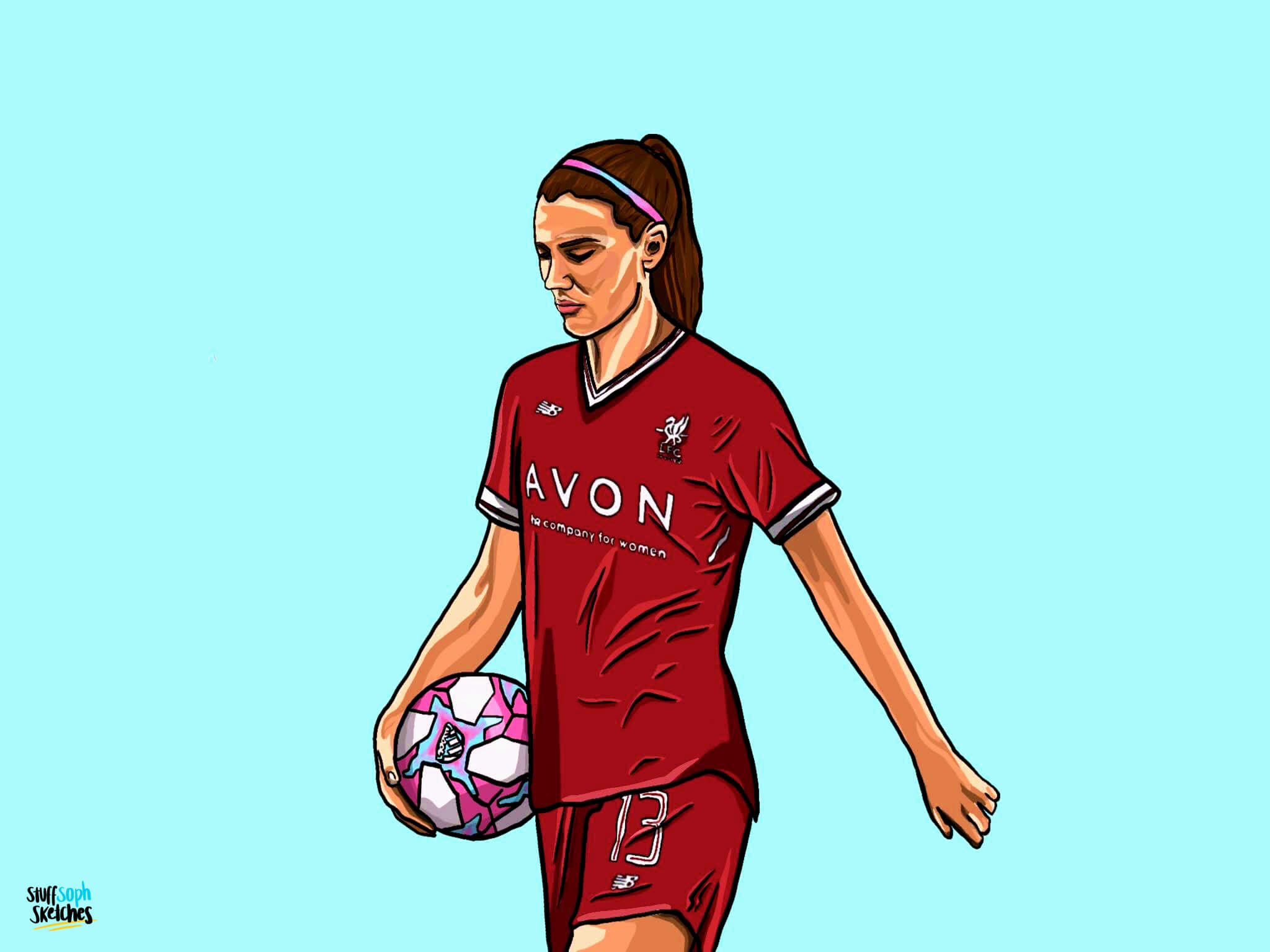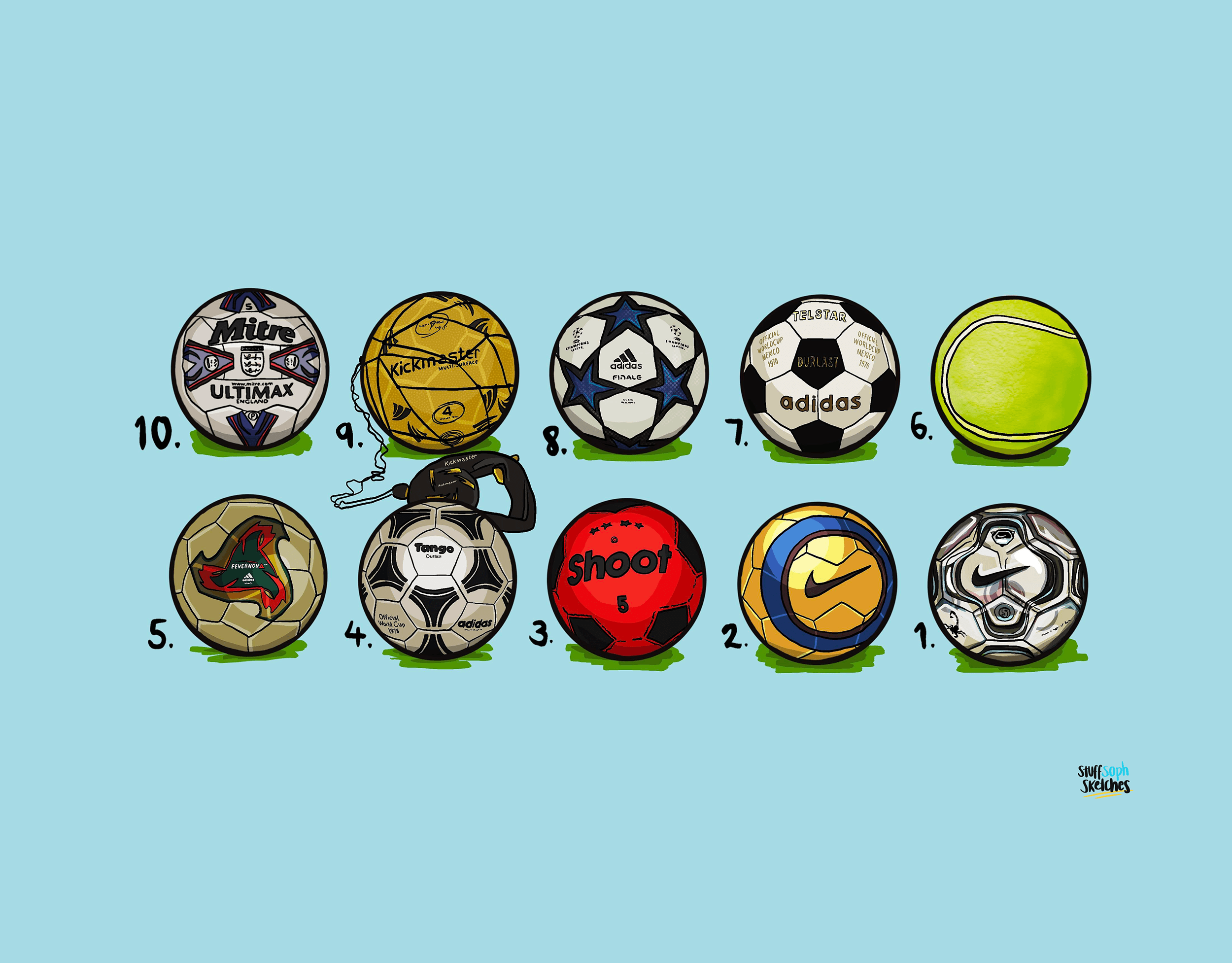Growing-up, I only knew one girl who played football for a local team. Split like a DJ Casper-style school disco, the British playgrounds I experienced predominantly saw boys playing football on one side and the girls hula-hooping or skipping on the other. Girls like pink and boys wear blue, that sort of stuff. Thankfully, this mode of thinking is generally defunct in the present, and yet, football as a global phenomenon still seems to be embroiled with, and hindered by, gender prejudices.
Some fifteen-years later, as a secondary school English teacher, I was surprised to see discussions of women’s football enter my classroom. In the wake of the It’s Coming Home fever from the World Cup in Russia the previous summer, my morning tutor group were unsurprisingly keen to continue watching football highlights in the mornings. As it turns out, the Women’s World Cup of 2019 would prove to be far more than a pacifying behaviour management tool to quieten a bunch of thirteen-year olds. Having organised a sweepstake (played for pride rather than money, you’d be pleased to know) and having completed a large wall chart together for the World Cup in 2018, one girl in the group suggested that we do the same for the upcoming women’s competition and the entire class were on board. The previous World Cup in Canada, which saw England finish third in 2015, marked a considerable global spike in the popularity of the women’s game. When the World Cup in France came around, television viewing figures had again increased and the opportunity to buy tickets from as low as €9 (albeit somewhat insulting when compared to the price of a bang average Premier League game) saw audiences grow inside of the stadiums. As a form group, we spent our mornings reading player profiles and match reports, and I was pleased to find out that many of the students were watching the games at home so they could discuss them at school the following day. One particular talking-point from this tournament came after Marta, one of the most highly regarded players of all time, celebrated her landmark sixteenth World Cup goal by pointing to a logo printed onto her boots. Brazen on the side of her plain black footwear stood an equal symbol in aptly blended tones of pink and blue. Her sponsorship deal had expired the previous year and the striker had since refused to sign a new one on the grounds that branding companies were not offering her contracts on par, or even similar to that of male players. For many, following the Lionesses over the course of this competition fuelled a fervent interest in women’s football for the upcoming domestic season. However, this greater level of engagement only proved to highlight the deficiencies apparent in world football.
While Man City and their gender-neutral Instagram account sit proudly at the top of the WSL, a closer look at Liverpool’s fall from grace is somewhat microcosmic for the current state of affairs in women’s football.
It is not all bad news though. The Finnish FA are an inspiring international example having recently binned the “women’s” prefix in changing the name of their top-flight division to Kansallinen Liiga (the National League) as well as being one of the few footballing organisations with a policy of equal pay for their national teams. With each season that passes the FA Women’s Super League (WSL) in England is developing too and attitudes are changing, albeit gradually. Sponsors and investors are keen while the increase in media coverage has certainly had a positive influence upon matchday attendances and television spectatorship. Before the 2019-20 season was placed on hold, every team in the WSL (apart from Manchester United, Arsenal and Birmingham) have hosted at least one league fixture at their official club ground. Funds permitting, English clubs are also starting to make bigger statement signings, bringing in influential players that have impressed at recent international tournaments and in leagues outside of the British Isles. Chelsea’s signing of Sam Kerr from Chicago Red Stars last November was a serious sign of intent in challenging Arsenal’s Dutch superstar Vivianne Miedema for the annual Golden Boot. The twenty-six-year-old Australian striker was voted top of the Guardian’s Best 100 Female Footballers in the World in 2019 and is a four-time recipient of the PFA’s Women’s Footballer of the Year award. As if this gesture was not poignant enough, Kerr would then go on to score her first goal in a Chelsea shirt against Miedema’s Arsenal. Current league leaders Manchester City are making positive movements towards inclusivity off the pitch in creating centralised social media accounts rather than separate gender-specific profiles (although their Instagram seems to be more concerned with videos of Bernardo Silva chucking bread into a toaster and Nicolás Otamendi kicking socks into his washing machine than it does about the footballing talent of Lioness Captain Steph Houghton or bright sparks like Georgia Stanway). It’s a start, nonetheless. I don’t know how much Tesco pay attention to the WSL but their mantra that ‘every little helps’ is definitely applicable here.
While Man City and their gender-neutral Instagram account sit proudly at the top of the WSL, a closer look at Liverpool’s fall from grace is somewhat microcosmic for the current state of affairs in women’s football more broadly. One of the leading founders of the WSL in 2011, Liverpool Women have had their fair share of success; the Reds won back-to-back league titles in 2013 and 2014, winning the FA Club of the Year for their performance in the latter, and have won the Northern Division of the Women’s Premier League three times before the competition made-way for the current league format. Yet, the lack of continued investment has seen the club plummet to the bottom of league with a miserable six points for the current campaign. In a similar pattern to the Premier League, it is the wealth of the Manchester and London clubs that has seen the likes of United and Arsenal succeed in the past and City and Chelsea conquer in the present. Lorded as the seventh highest-earning club in the world with an annual revenue of approximately €604 million and an estimated net-value of €2.2 billion, Liverpool are not exactly strapped for cash. And still, the women’s team has been neglected. Plagued by low wages, short player contracts, limited media promotion, basic training amenities and a history of poor shared pitches, it is no wonder they are struggling. But wait, what’s that? Liverpool are set to unwrap their new Kirkby training base worth £50 million in July? Spanning 9,200 square-feet, the complex is designed to house both the senior teams AND the academy facilities? Amazing! Oh – but not the women? Ah. Right. This calamitous cock-up echoes Tottenham’s bizarre decision to unveil their sparkling new “multi-purpose” stadium in March 2018 by prioritising an Under Eighteens match that saw 28,987 fans attend on the same day Tottenham Women’s played an important “home” fixture at Cheshunt FC’s towering 350-seater. It is difficult to see this as anything other than a glaring missed opportunity to promote just how “multi-purpose” the new Tottenham Hotspur Stadium could be. Small shared grounds are a commonplace in the WSL – the pinnacle of women’s football in England remember – making maintenance and the strengthening of a club identity rather challenging. Liverpool Women have been previously housed at small college “stadiums” used by non-league teams and currently share a ground actually designed for a rugby team (a venue that was also problematically shared with Merseyside arch-rivals Everton from 2013 to 2018 – not exactly the San Siro, is it?). Having a bunch of rugby lads smashing up your pitch doesn’t exactly bode well for a proposed bit of weekend tiki-taka and without the groundskeeping facilities available to the standard seen in the men’s divisions, the WSL is often forced to postpone games due to bad weather. Storm Ciara earlier this year proved particularly disruptive.
Liverpool’s poor run of form correlates with the fact that they have been inundated with injuries and they are not the only club struggling with fitness either. For example, High-flyers Arsenal could only name five substitutes for the Continental League Cup final in February in which they narrowly lost 2-1 to a full-strength Chelsea side. Not only are injury problems likely to be exacerbated by the pitiable playing surfaces but female athletes are further disadvantaged because of the equipment that is available to them, namely their footwear. Research has concluded that female footballers are more likely to suffer from anterior cruciate ligament damage and prolonged knee and hip problems given that they usually have to wear boots designed to suit male athletes. Albeit a much wider societal issue, that the majority of scientific research is still disproportionately based on the male anatomy, it seems ridiculous that the safety of professional female footballers is at risk because of insufficient basic equipment required to partake in the sport. In 2018, incensed fans and players had to resort to Crowdfunder to campaign for the increased production of football boots for women. While women’s boots are (scarcely) available, the demand for such products was not deemed great enough by mainstream high-street manufactures, even when 75% of all women playing at grassroots level are wearing footwear designed for men. Now, I am not necessarily calling anyone out as being sexist, but if the shoe fits…?
Again, it is easy to look at the situation of Liverpool Women right now and see it as a sign of doom and gloom. However, there are progressive chapters in the story of this club’s history. For example, the Reds landed an opulent sponsorship deal with cosmetic giants Avon in April 2017. This pioneering three-year contract saw Avon become the first shirt sponsor for the club that was independent from the men’s team. Aside from the irony that women’s football depends on the investment of female-orientated businesses, an agreement with the beauty company was a tactical move for both sides in appealing to a larger female audience. Liverpool’s recruitment strategy has similarly shown signs of reform. In 2018, Vicky Jepson took charge at Merseyside as the first female to manage Liverpool since Barbara Nodwell in 1997. Jepson is only the fourth female manager from a list of fourteen coaches to have led the side after its establishment in 1989. I am not advocating that teams should be coached by the corresponding gender, but I do believe that there ought to be greater opportunities available for female managers to coach prestigious teams in top-flight divisions. The biggest and best clubs across the world – Lyon, Barcelona, Arsenal, Bayern Munich – still appear to favour male ex-pros and managers. Although Jepson’s current record isn’t exactly impressive, the successes of Emma Hayes at Chelsea and Casey Stoney at Manchester United should not be overlooked or understated. With Phil Neville confirming that he will leave his post with the Lionesses once his contract expires in July 2021, it will be interesting to see who the national team opt for next. Perhaps British society will be too busy bickering about the idea of a female James Bond, that the potential appointment of a female national football coach will be greeted without criticism.
So, where does this leave us? With the season paused as a result of the Coronavirus outbreak, fears are mounting with regards to future investment, and, indeed, the survival of the women’s game in England. On the 27 April, Reading WFC were the first WSL club to begin furloughing players amid heightened financial anxieties. The two Manchester giants, Chelsea and Spurs have announced that they have no intention of doing so, but it is still a deeply troubling time. FIFA have announced that £800 million will remain untouched during the pandemic and will continue to be distributed until 2022. The federation declared that the funds will be ‘invested into a range of areas including competitions, capacity building, development programmes as well as general governance and leadership’. All promising stuff, even if a little vague. Yet, these funds may not stretch all that far seeing that FIFA are an international organisation. Pushing the European Championships of 2020 back a year has had a literal knock-on effect on the Women’s Euros that is now proposed for 2022. Hosted in England, this competition was eagerly anticipated and would undoubtedly stimulate the development of the women’s game across the country and throughout Europe. This unpreventable poor-timing also threatens to jeopardise preparations for the upcoming Women’s World Cup of 2023. One can only hope that the rescheduling of the male money-making tournaments does not encumber the women’s competitions at this crucial time of amplified engagement. In light of this, the FA are continuing with the construction and implementation of their own ‘Gameplan for Growth’ – an ambitious four-year programme spearheaded by the pragmatic Baroness Sue Campbell. The FA appear to have adopted a “bottom-up” approach with the majority of encouragement aimed at grassroots level but when looking at the top, the disparity in the figures is frankly embarrassing. The prize money for the FA Cup semi-finalists has recently been doubled for the men’s competition, reaching £l.8 million in order to incentivise proper participation whereas the female equivalent only scrapes to £5000 in prizemoney – 0.02% of that of their male counterparts. With the ‘Gameplan of Growth’ in its infancy, I guess we can only wait and see.
Just last week, the US Women’s National Team were rejected in court as part of an ongoing gender-discrimination dispute with the US Soccer Federation over the rights to equal pay. Not used to losing, having won four of the eight World Cups ever played, the US Women’s team will not give up easily in the bid for financial equality. Statistically, they are more successful than the men’s and generate greater revenue. Megan Rapinoe and co. are not the only ones raising their voices either; when the team lifted the World Cup trophy in Lyon in front of sixty-thousand people, the crowd erupted with chants of ‘Equal Pay! Equal Pay!’ – a promising demonstration of popular disgruntlement.
While US Soccer are entangled in lawsuits of blatant misogyny, the claim for financial equality elsewhere is not as straightforward as it may seem. In England there are obvious infrastructural differences and financial implications beyond my understanding. In tandem with Barcelona’s Tony Duggan, I am not advocating for equal pay, just yet. Total equality is not exactly feasible at the minute, and such changes certainly cannot happen over-night. Nevertheless, football associations ought not to prolong the process; they need to be brave and wholeheartedly invest in women’s football. After all, it seems odd to exclude 49.6% of the world’s population from a sport in which we are all equally capable of enjoying.



